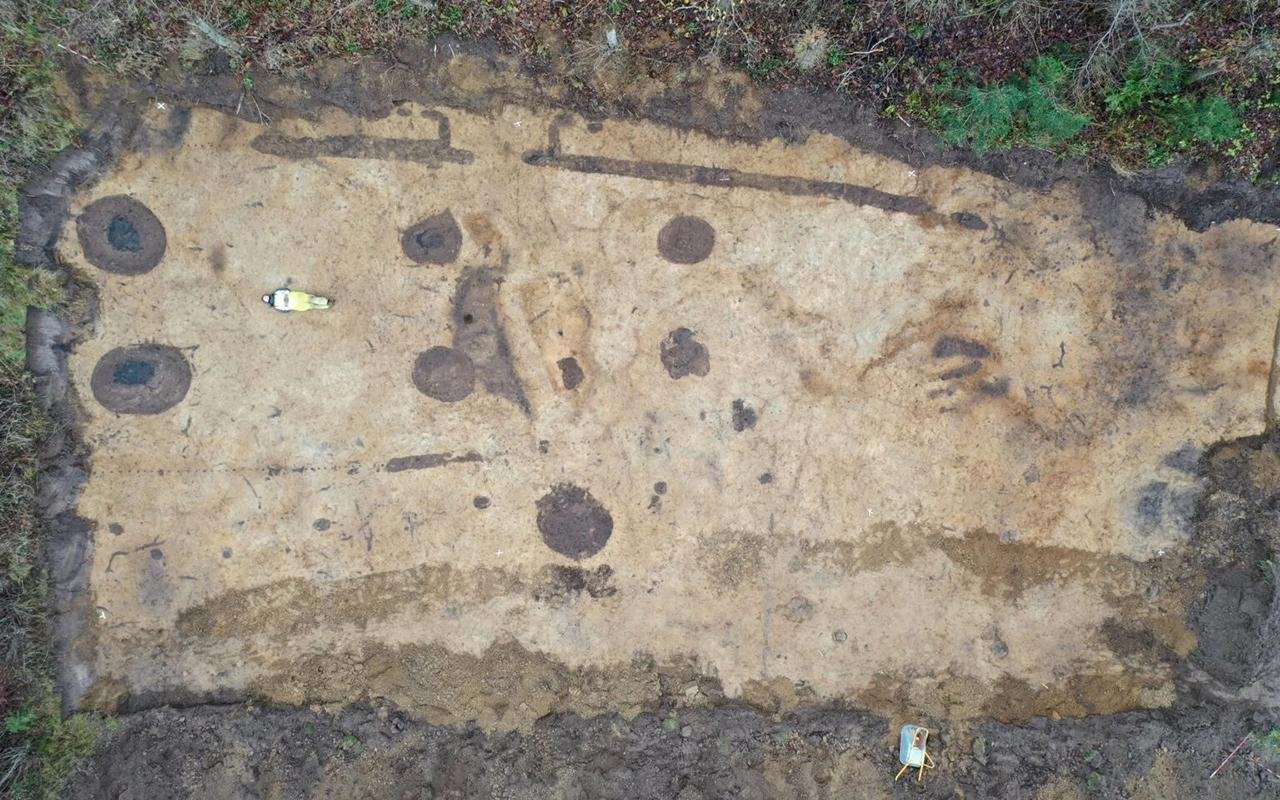Archaeologists unearthed the remnants of a large structure that was most likely built during the late Viking Age. The structure has been uncovered by archaeologists from the Historical Museum of Northern Jutland in Denmark.
 Remains of an ancient Viking structure discovered in Denmark. Credit: Nordjyske Museer
Remains of an ancient Viking structure discovered in Denmark. Credit: Nordjyske Museer
Unlike any other in the region, it is the largest building of its kind found in more than a decade.
When fully intact, the structure measured up to 39 meters long and 7 to 10 meters wide, and the roof was supported by a series of 10 to 12 rectangular oak posts.
The hall’s design is similar to those found by archaeologists at Harald I’s ring fortresses, including Fyrkat near Hobro and Aggersborg near Aggersund.
The archaeologists believe the hall’s plot may have been the site of a nobleman’s farm, probably the nobleman mentioned on a local rune stone: Runulv den Rdsnilde. The almost 1.5-meter tall stone, which dates from 970 to 1020 C.E., bears the inscription: “Hove, Thorkild, Thorbjrn placed their father Runulv den Rdsnilde’s stone.”
Researchers believe the construction was likely larger than average houses at the time. It may have functioned as a community hall, hosting political gatherings and other events between the late ninth and early eleventh centuries.
“This is the largest Viking Age find of this nature in more than ten years, and we have not seen anything like it before here in North Jutland, even though it has only been partially excavated,” archaeologist and excavation leader Thomas Rune Knudsen, the excavation leader and an archaeologist with North Jutland Museums, said in a statement.
“We only had the opportunity to excavate part of the hall, but there are probably several houses hidden under the mulch to the east. A hall building of this nature rarely stands alone,” he added.
“It is difficult to prove that the found Viking hall belonged to the family of Runulv den Rådsnildes, but it is certainly a possibility,” said Knudsen. “If nothing else, the rune stone and hall represent the same social class and both belong to society’s elite.”





